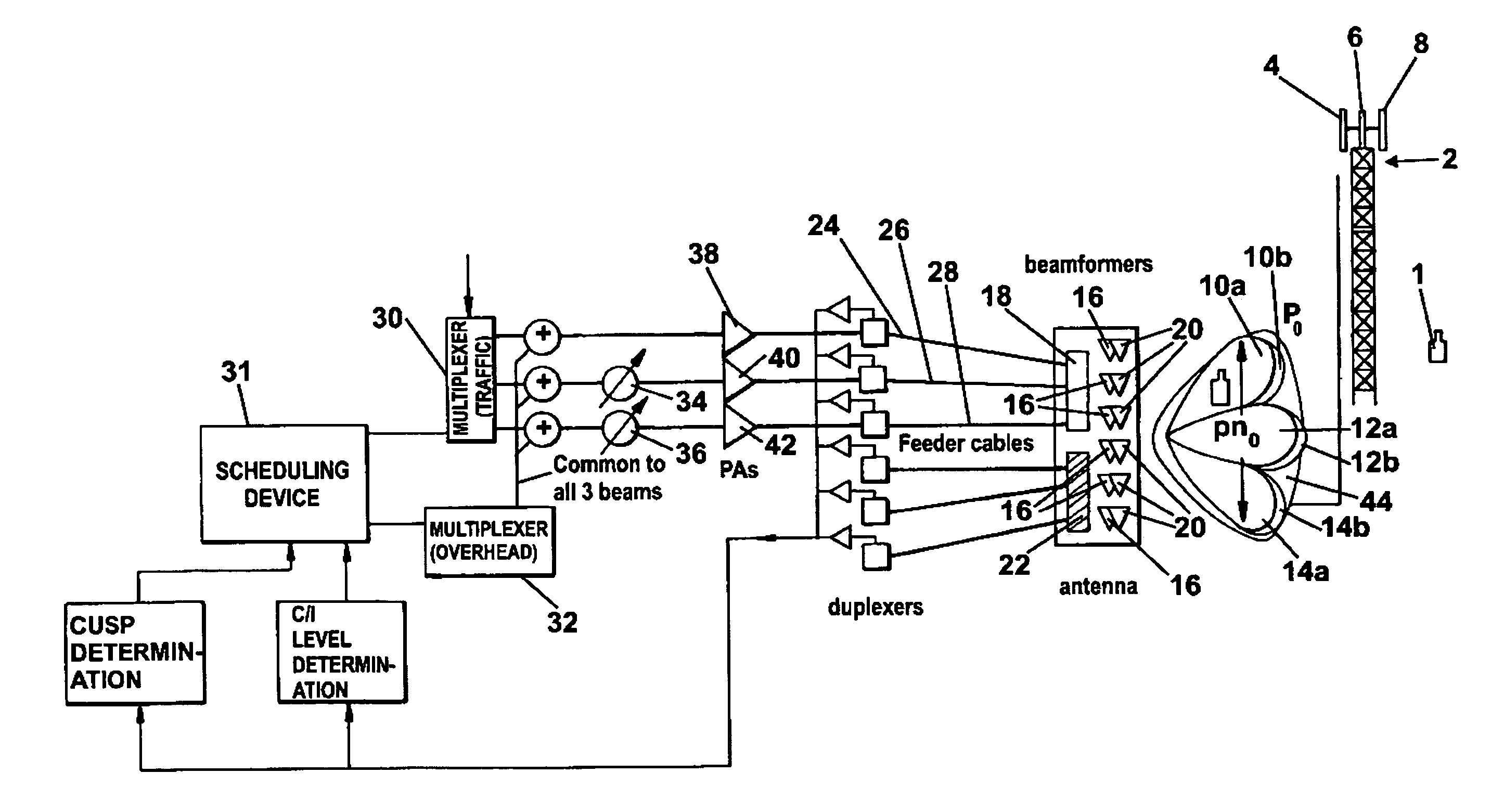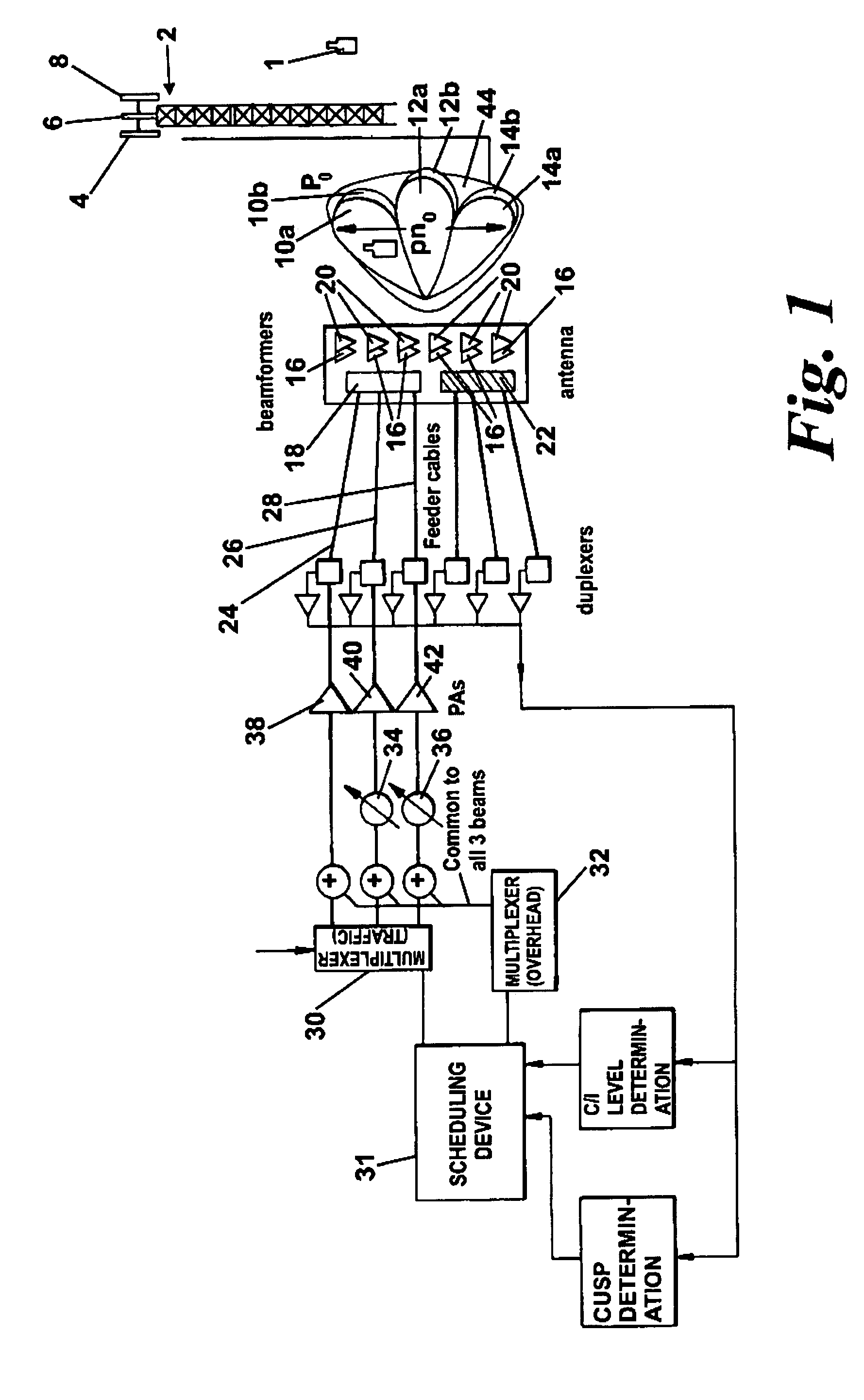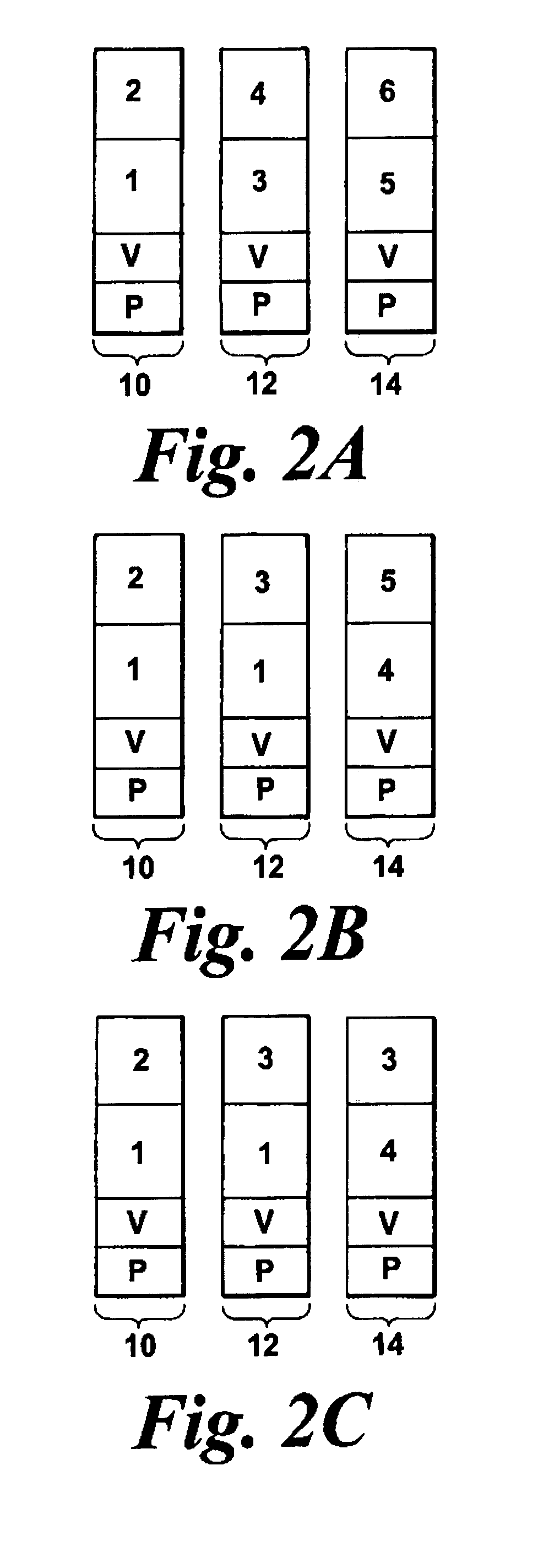Multi-beam cellular communication system
- Summary
- Abstract
- Description
- Claims
- Application Information
AI Technical Summary
Benefits of technology
Problems solved by technology
Method used
Image
Examples
Embodiment Construction
[0052]There will now be described by way of example the best mode contemplated by the inventor for carrying out the invention. In the following description, numerous specific details are set out in order to provide a complete understanding of the present invention. It will be apparent, however, to those skilled in the art that the present invention may be put into practice with variations of the specific.
[0053]FIG. 1 shows an antenna arrangement for providing coverage in one sector of a three sector cell of a cellular communication system, which cell is serviced by a base station (2). The base station (2) is equipped with three such antenna arrangements (4, 6, 8) off-set in azimuth angle by 120°, so that each antenna arrangement covers a sector of the cell. The antenna arrangement defines a first narrow transmit / receive beam (10a) and diversity receive beam (10b), a second narrow transmit / receive beam (12a) and diversity receive beam (12b), a third narrow transmit / receive beam (14a)...
PUM
 Login to View More
Login to View More Abstract
Description
Claims
Application Information
 Login to View More
Login to View More - R&D
- Intellectual Property
- Life Sciences
- Materials
- Tech Scout
- Unparalleled Data Quality
- Higher Quality Content
- 60% Fewer Hallucinations
Browse by: Latest US Patents, China's latest patents, Technical Efficacy Thesaurus, Application Domain, Technology Topic, Popular Technical Reports.
© 2025 PatSnap. All rights reserved.Legal|Privacy policy|Modern Slavery Act Transparency Statement|Sitemap|About US| Contact US: help@patsnap.com



